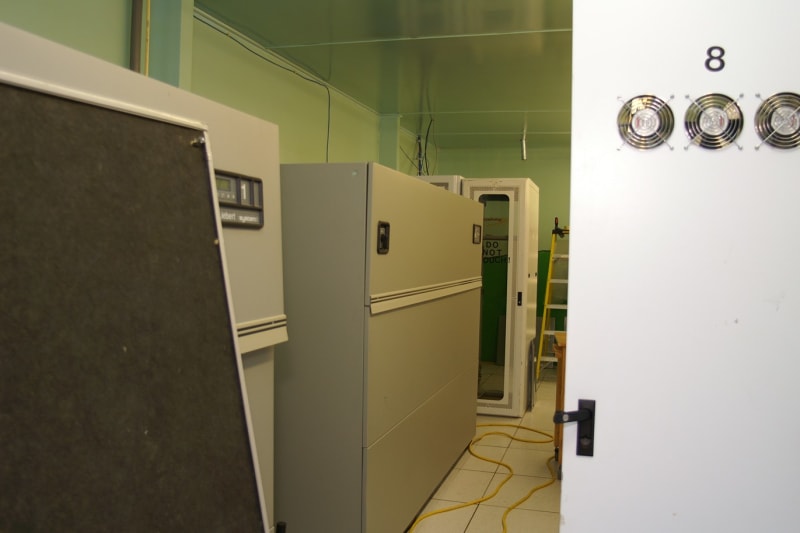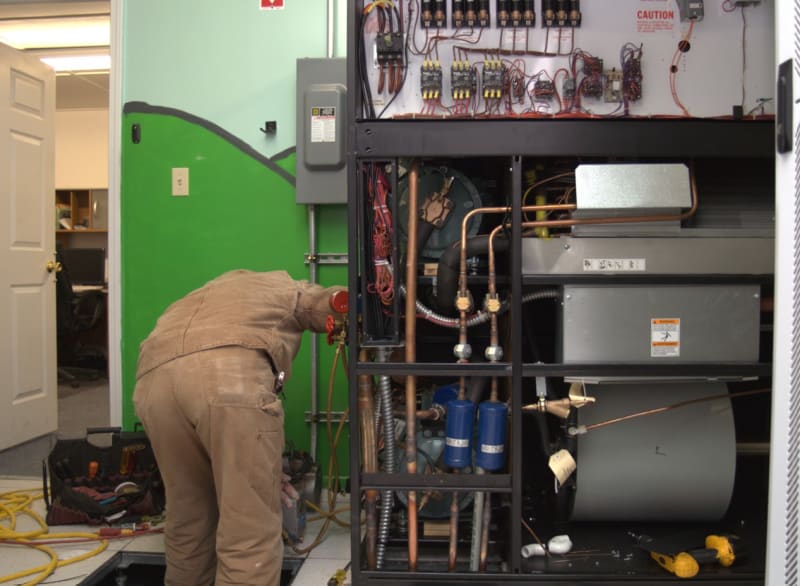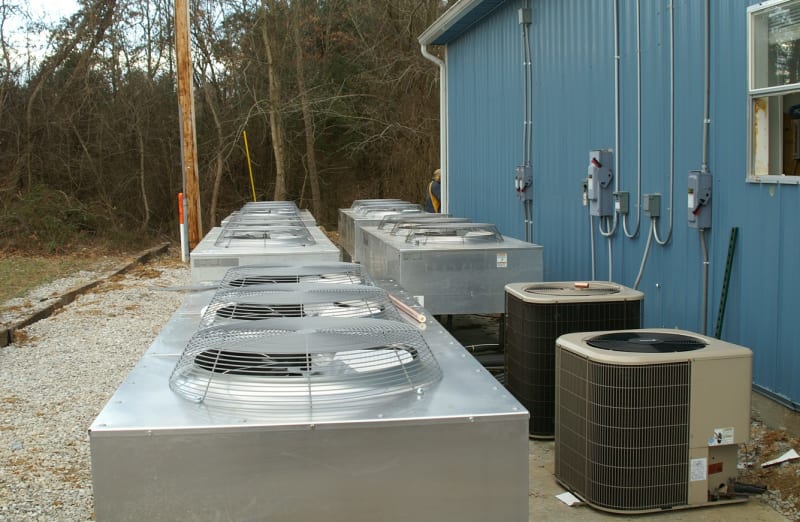Hi All,
Let me start by making you aware I am a HVAC contractor but have lots of years in the field. I am selecting a system for a small server room, A couple of normal size racks and all the stuff you would normally see. I am awaiting a full audit of the equipment from their IT person so I can run the cooling load.
In the meantime I am playing around with a nominal 3-ton unit. If this was a really serious room I would be using a unit specifically designed for the task, but around here these small rooms all seem to get mini-splits which is what I am looking at using.
I plugged in 68 DB and 57 WB (50% RH) as my entering air conditions in my design software. IT guys like to keep things cold. To my surprise the software complained about low inlet temperatures on the air handler. After playing around a bit I discovered 59 deg. WB is the minimum regardless of the DB. I can only assume that when running low DB and WB we could approach freezing conditions on the evap coil.
But like I mentioned there are tons of mini's out there doing these small computer rooms and they don't seem to have any issues. But as we all know 99% of the cooling load is going to be sensible so how can these units not get into trouble by drying the air out below 50% RH?
What do you all think?
Let me start by making you aware I am a HVAC contractor but have lots of years in the field. I am selecting a system for a small server room, A couple of normal size racks and all the stuff you would normally see. I am awaiting a full audit of the equipment from their IT person so I can run the cooling load.
In the meantime I am playing around with a nominal 3-ton unit. If this was a really serious room I would be using a unit specifically designed for the task, but around here these small rooms all seem to get mini-splits which is what I am looking at using.
I plugged in 68 DB and 57 WB (50% RH) as my entering air conditions in my design software. IT guys like to keep things cold. To my surprise the software complained about low inlet temperatures on the air handler. After playing around a bit I discovered 59 deg. WB is the minimum regardless of the DB. I can only assume that when running low DB and WB we could approach freezing conditions on the evap coil.
But like I mentioned there are tons of mini's out there doing these small computer rooms and they don't seem to have any issues. But as we all know 99% of the cooling load is going to be sensible so how can these units not get into trouble by drying the air out below 50% RH?
What do you all think?




